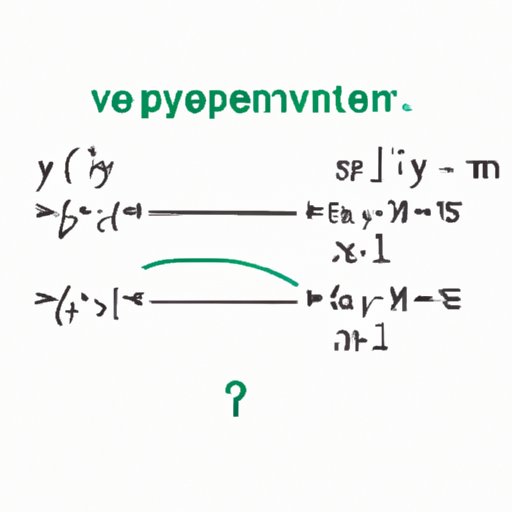Introduction
Linear equations are an essential part of mathematics, used throughout various fields, including science, economics, and engineering. At its core, a linear equation relies on two fundamental elements: the slope and the y-intercept. Understanding the y-intercept is crucial for solving linear equations, and this guide aims to clarify what the y-intercept is and why it matters.
The Importance of Understanding Y-Intercepts in Mathematics: A Beginner’s Guide
The y-intercept is the point where a linear function intersects with the y-axis. It represents the initial point of a function when x equals zero. This point is crucial for understanding and graphing linear equations, and for solving real-world problems involving these equations. Moreover, knowing the y-intercept helps in determining the starting point for creating linear equations and provides valuable insights into the behavior of a function.
For instance, consider the function y = 3x + 2. The y-intercept is 2, which means that when x equals zero, y = 2. This information gives us a useful starting point for graphing the function, as well as understanding its behavior for any given values of x.
Breaking Down the Basics of Y-Intercepts: An In-Depth Analysis
There are different terminologies related to y-intercepts that are important to understand when studying linear equations. One such term is the x-intercept, which is the point where the function intersects with the x-axis. Another important concept is the slope, which represents the rate of change of the function as x increases. Understanding slopes and y-intercepts provides insights into how linear equations behave and interact.
To graph a linear equation, we need to identify the slope and y-intercept and plot them on the Cartesian plane. The y-intercept is represented by the point (0, b), where b is the y-intercept value. This point indicates the starting point of the function, and the slope determines its direction and steepness.
Common mistakes that students make when working with y-intercepts include confusion between the x-intercept and y-intercept and misidentifying the slope. Therefore, it is essential to practice and master these foundational concepts to solve more complex problems with confidence.
Why Y-Intercepts Matter: Exploring Their Role in Linear Equations
The y-intercept plays a critical role in determining the starting point for linear equations. It is essential for different algebraic methods, such as slope-intercept form and point-slope form.
Slope-intercept form, y = mx + b, is a way of writing a linear equation, where m represents the slope, and b represents the y-intercept. Knowing the slope and y-intercept of a function allows us to write it in this form. Similarly, point-slope form, y – y1 = m(x – x1), where (x1, y1) is a point on the line, relies on the y-intercept and slope to represent a linear equation.
Understanding y-intercepts is also crucial in real-world applications. For instance, in economics, a linear equation can represent the relationship between demand and supply. The y-intercept in such a scenario would represent the demand when the price is zero. In physics, a linear equation can represent the position of an object as it moves at a constant speed, where the y-intercept represents the initial position.
Mastering Y-Intercepts: Tips and Tricks for Students of All Levels
Like any mathematical concept, mastering y-intercepts requires practice and patience. To get better at identifying and solving y-intercepts, students can use different strategies, such as:
- Working through examples and practice problems
- Using online resources and tutorials
- Collaborating with peers and seeking help from instructors
It is also helpful to avoid common pitfalls, such as mixing up the x-intercept with the y-intercept. Finally, troubleshooting difficult y-intercept problems involves breaking them down into smaller, more manageable parts, and applying the appropriate techniques to solve them.
The Intersection of Math and Real-World Applications: How Y-Intercepts Play a Role
Y-intercepts are essential in various fields and industries, demonstrating the practical applications of math in our daily lives. In engineering, a y-intercept can represent the initial pressure of a gas in a container. In finance, y-intercepts can represent the fixed costs of a company, regardless of the number of goods produced. In epidemiology, a y-intercept can represent the number of infected people in a population before any intervention is implemented.
Understanding and applying y-intercepts is just one way in which math concepts are integrated into real-world problems, allowing us to better understand and predict the world around us.
Conclusion
Y-intercepts are fundamental elements of linear equations, providing crucial insights into the starting point and behavior of a function. Understanding the y-intercepts is essential for creating, graphing, and solving linear equations, and applying these concepts in real-world scenarios. While mastering y-intercepts can be challenging, students can adopt various strategies to improve their skills and confidence. Ultimately, a firm grasp of y-intercepts will provide valuable insights into the intersection of math and practical applications, enabling us to make more informed decisions and predictions.
